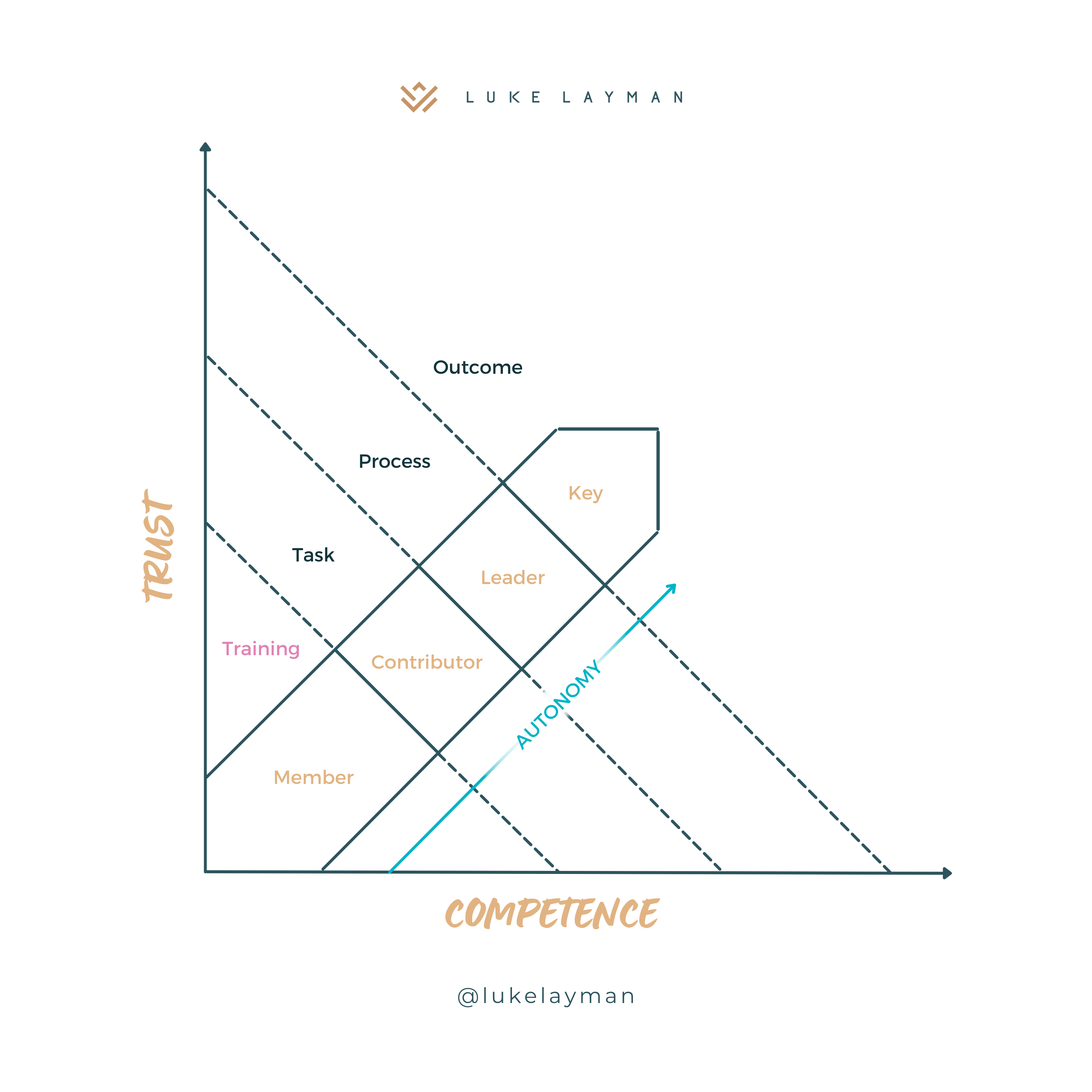How to Keep your Key Employees in a Fierce Market

2001 was a security crisis. We acclimated to a new posture of security and accepted less freedom in exchange for more protection.
2008 was a financial crisis. We adjusted to new norms about financial scrutiny.
2021 was and is a labor crisis. The pandemic changed more about the way we work and live and the expectations we have in a work environment.
With 401k’s being easily transportable and employers offering a variety of flex benefits, it is easy for employees to seek new options. So, which employees do we need to keep, and how do we keep them?
Gino Wickman talks about “Get it, want it and capacity to do it”
I say it goes further than that. I say the axis are defined by competency and trust, and as both are increased the autonomy too increases.
When combining the concepts our key employees are those that have buy in into the shared mission and vision of the company, are integral to establishing team purpose, take full ownership and are capable of working autonomously- fully competent and with full trust.
By defining the characteristics of these heavy hitters we can now create performance plans that help us keep them.
Do you share profit?
Do they have equity?
Do you enable them to participate in strategic meetings?
Are they involved in important decisions?
Key employees don’t have to be your executive team- and it’s not a foregone conclusion that every member of your executive team is a key employee unfortunately.
If I were to come in and offer to buy your business today I would ask the simple question, “what employees are critical to the success of the business?”
Then, I would make sure I had a plan to keep them by
- Having a clear understanding of their goals and ambitions
- Determining what success looks like for them
- Creating an environment for longevity
- Developing an incentive structure (compensation and other) unique to them
- Implementing a development roadmap measured on an appropriate interval
To learn more, tune into episode 10 of the Shiftwork Podcast here.
Key Employee Plan = Key to Success
Jack Welch said "Before you become a leader, success is all about growing yourself. After you become a leader, success is about growing others."
Can you identify the members of your team that would have the greatest impact if they left?
Do you compensate them differently? Create different incentives?
If your company lacks a plan to incentivize those key performers-they are likely going to start looking elsewhere for someone who will. By having a plan to promote, retain and generally keep your key employees happy you can consistently beat your competitors.
Now, I’m not advocating that we create a caste system in our business, but there has to be a tiered structure. If there are 170 people on an airplane going from Dallas to Memphis , there are likely a couple of people that you would consider to be more important than others.
By simply saying that the pilots are slightly more key than the flight attendants, and the flight attendants are slightly more key than the passengers we can begin to establish the hierarchy. If there were no passengers there would be no revenue, but if there were no pilots- well, that’s pretty obvious as well.
There is a heavy cost for not creating an environment where your star performers are not engaged on a consistent basis.
What can you do today to make sure these employees are sticking around for the long haul?
Approved Favoritism in the Work Force
Lets face it, not all relationships are created equal-There are certain people in my life that I like more than others. You can tell who I like more simply by who I give more of my time to.
Right up there at the top of the list is my family that accounts for a significant amount of where my energy goes. But, what about my team members, do they all get equal treatment?
Of course not, and I would advocate that its completely appropriate.
I have members of my team that I have known for 20 years and others that I feel like I have known for twenty years- they are going to get more of my time and energy because it’s more about the relationship than whatever we are hoping to achieve in our work environment.
This doesn’t mean that I treat anyone poorly, and it absolutely doesn’t mean that I discriminate. What it does mean is I apply my time and energy to those that I know are part of my tribe.
Consider there are 4 categories of employees
Member. Simply granted inclusion because they share common values and beliefs, or resonate with your cause. They have no skills critical to the success of your company, yet.
Contributor. Makes meaningful impact, understands their role and can accomplish key tasks.
Leader. Leaders own processes, manage people, take initiative. They have ownership in the trajectory and the execution.
Key. The top tier are the people you can’t live without. Their impact is marked and they share in both the wins and the losses.

